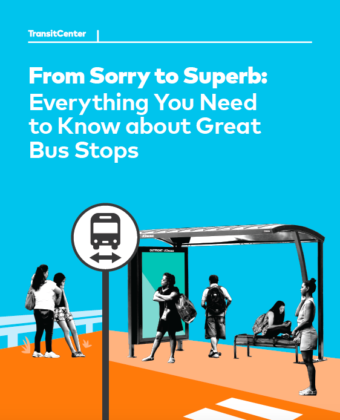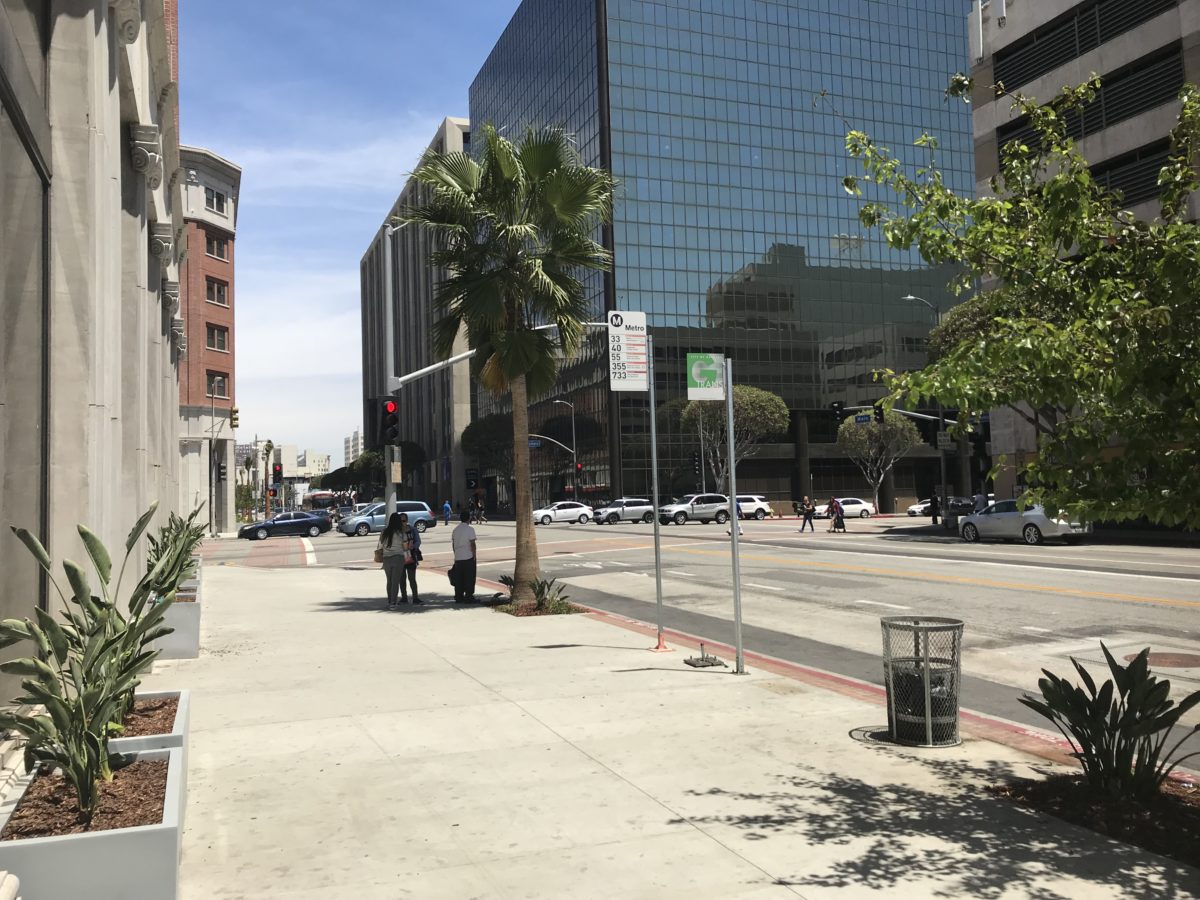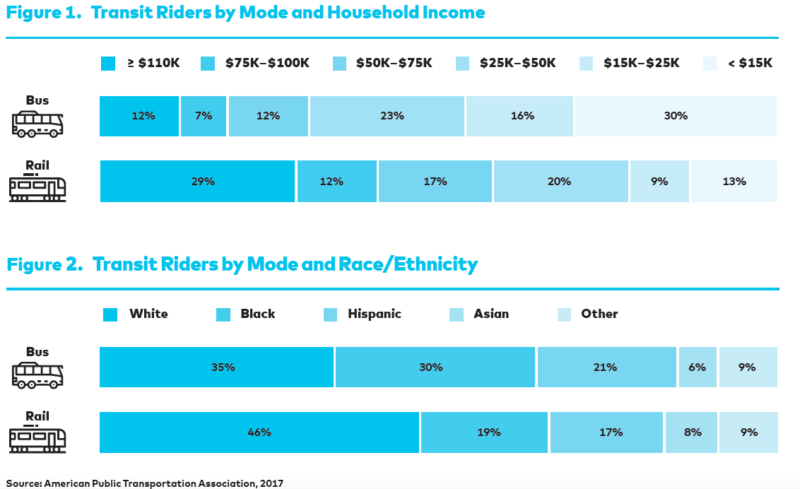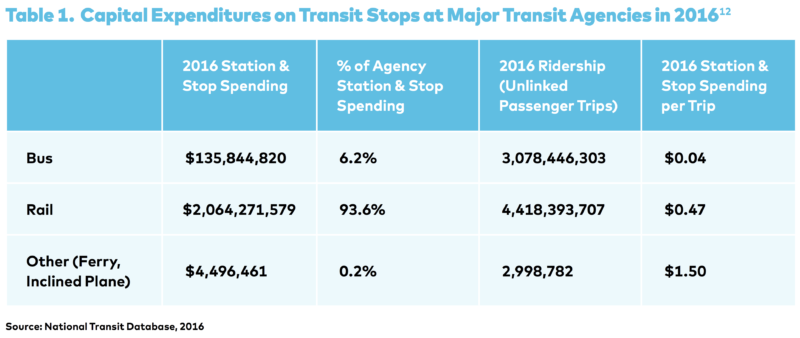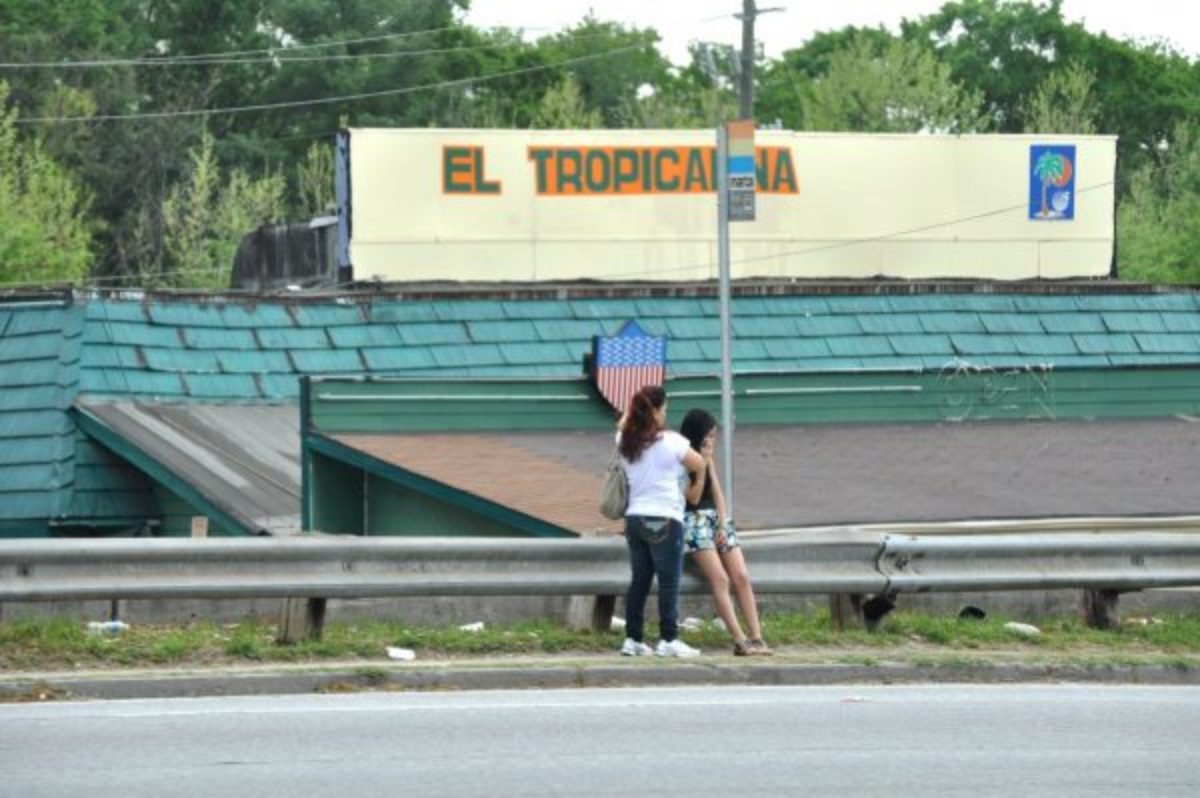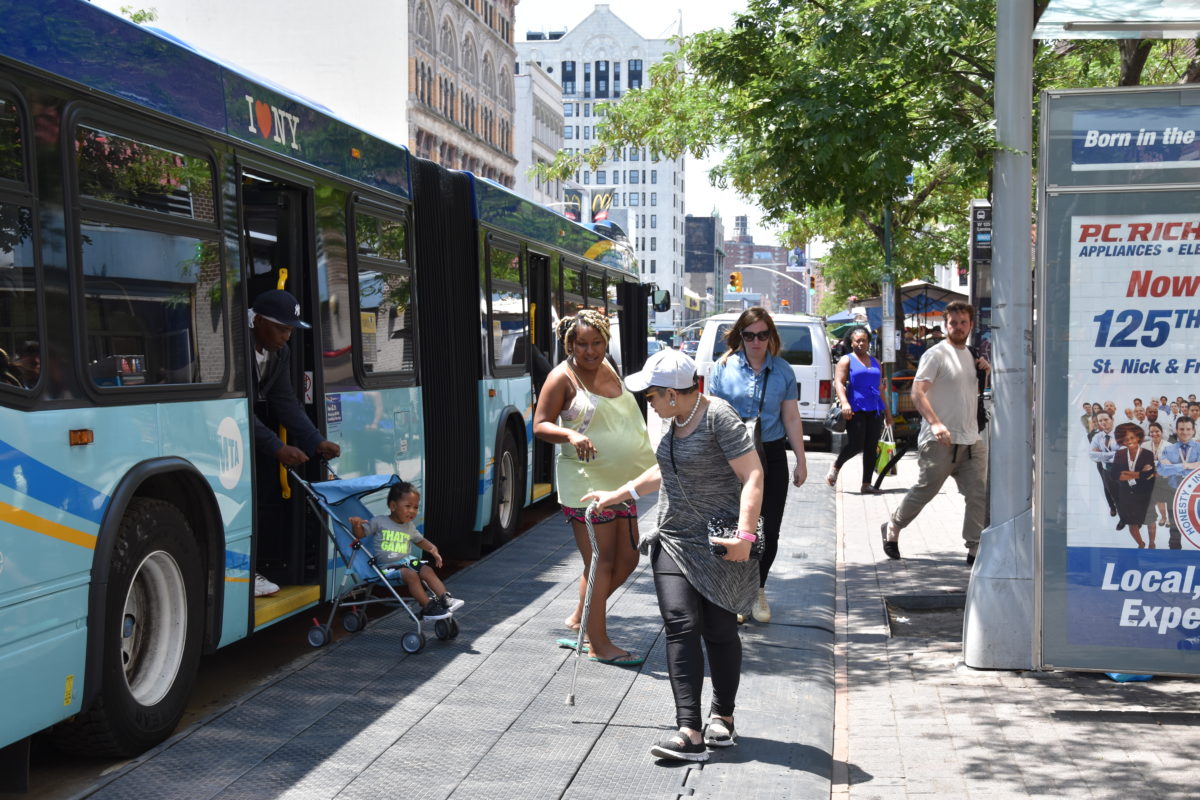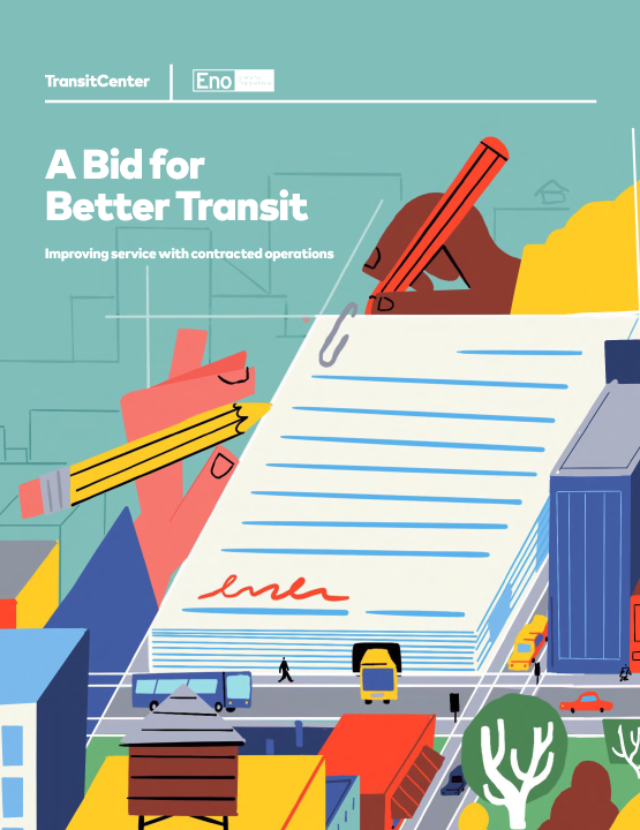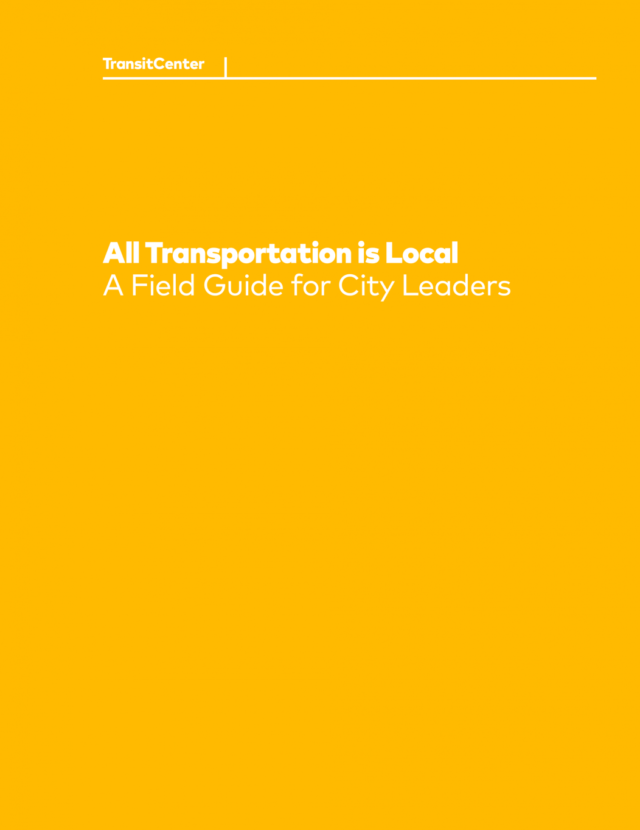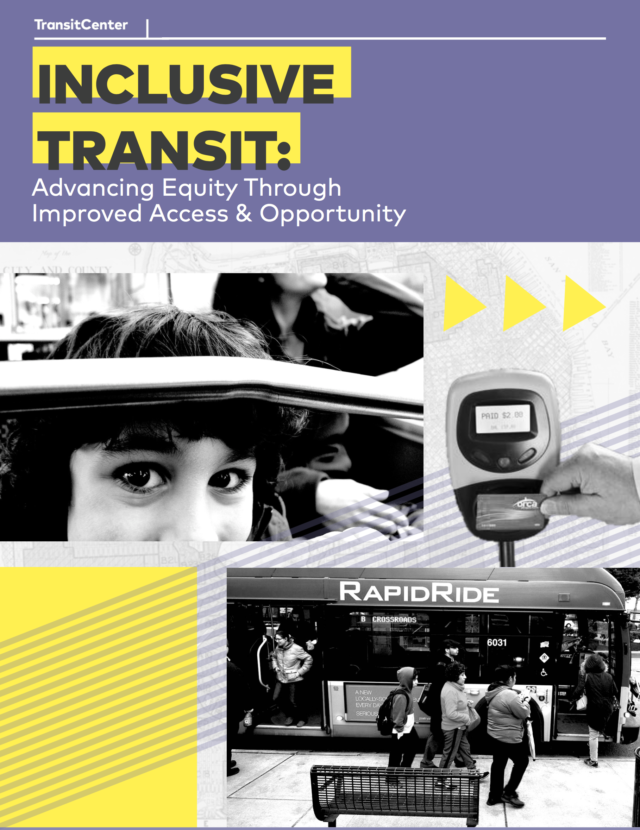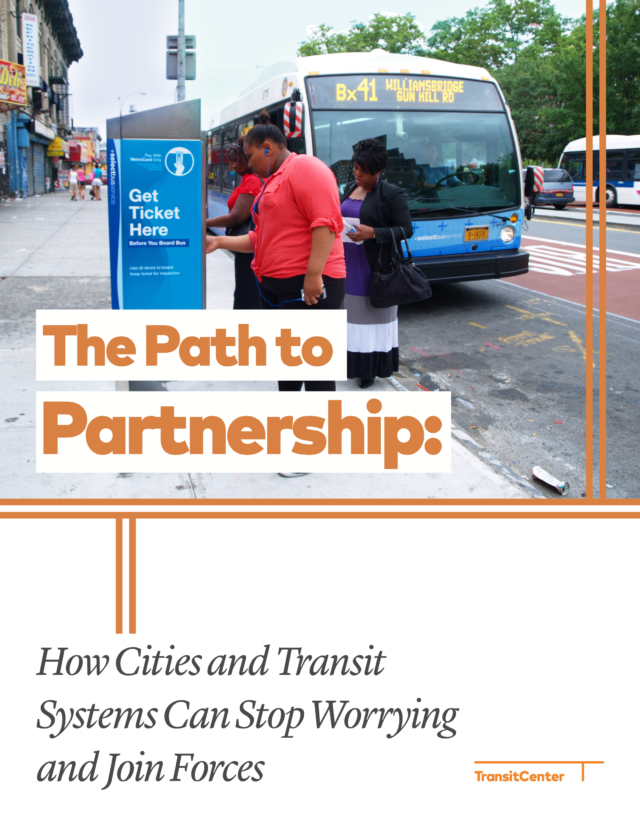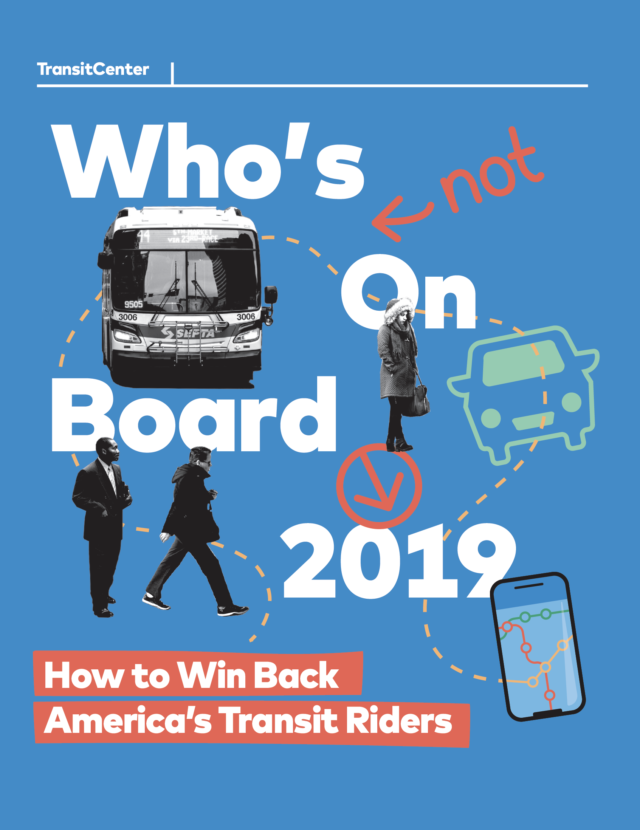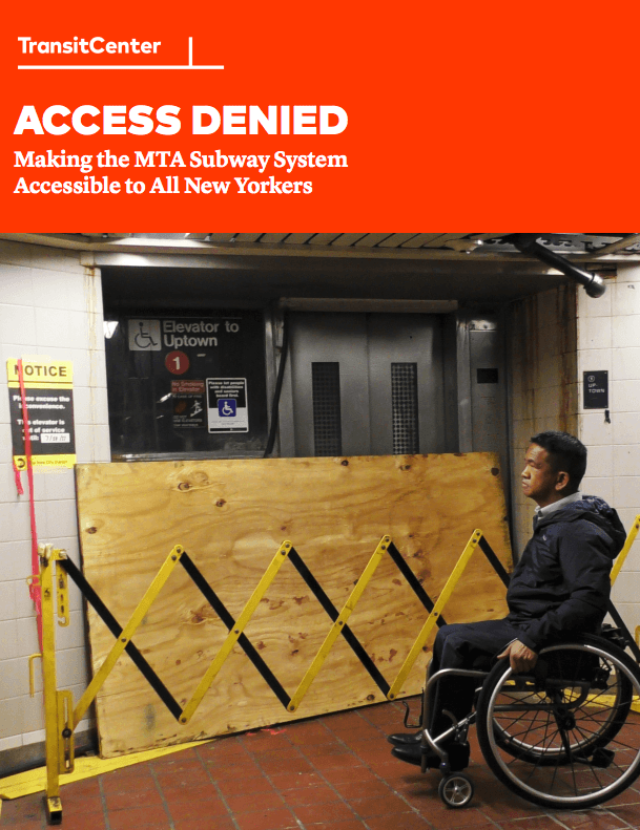Introduction
Better bus stops create better transit. Great bus stops are comfortable places to wait, surrounded by safe and accessible walking conditions — and they are important drivers of bus ridership and customer satisfaction. Great bus stops result from collaboration; careful design and placement; and continuous funding, maintenance, and improvement. Buses are the foundation of America’s public transit system.
In the United States, half of all transit rides are taken on buses, and buses provide the only fixed-route transit services for the majority of U.S. agencies. Buses serve more economically and racially-diverse populations than rail and are accessible to people with physical disabilities, while some rail service — particularly in cities with old rail networks — is not.
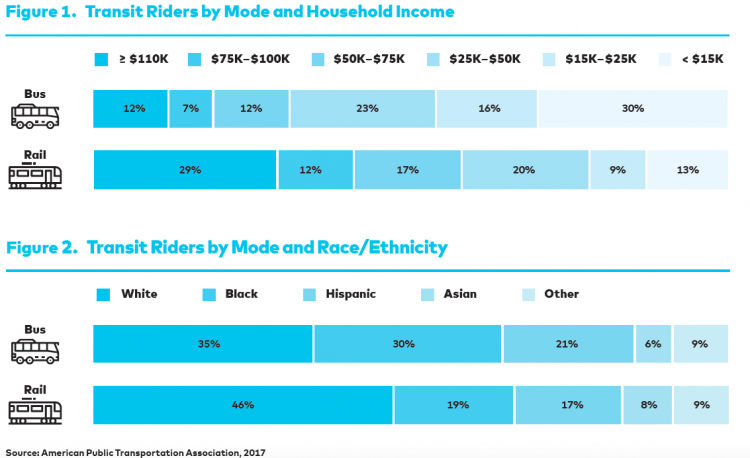
An overall decrease in transit use across the country, driven by plummeting bus ridership, underlies the urgency in addressing bus stops. Research suggests that better stops and walks to stops can encourage ridership and improve the transit experience. Transit agencies and their city partners should invest in the entire transit experience, including before the rider gets on the bus, to stymie falling ridership and to make transit a viable option for all.
Many transit agencies are redesigning their bus networks to provide more direct and frequent bus service. This approach generally makes transferring between routes more commonplace for riders and therefore, quality bus stops at connection points more important. Transit agencies investing in network redesigns to foster service improvements should not overlook the value that good bus stops also contribute.
Yet transit agencies invest paltry resources in bus facilities compared to other modes, despite substantial bus ridership and the importance of facilities in supporting ridership. At the U.S. transit agencies that operate both bus and rail service, bus facilities get far less investment than rail facilities — less than a tenth as much on a per-trip basis.
While agencies develop visions, carefully plan, and approve high budgets for sleek designs, innovative art, and digitized information in rail stations or transit centers, they often forgo appropriately matched efforts for basic improvements to bus stops.
Bus stops are easy to do well and worth doing right. Standard features for highly-used bus stops should include amenities such as benches, shelters, and trash cans; information on schedules, service, wayfinding; and sidewalks and lighting nearby. As far as transit investments go, enhancing bus stops is a low-cost, high-impact way to make system-wide upgrades to a transit network. Infrastructure for bus stops is significantly cheaper and faster to construct than for rail facilities.
As far as transit investments go, enhancing bus stops is a low-cost, high-impact way to make system-wide upgrades to a transit network.
The cost of one bus shelter ranges considerably depending on factors such as design, size, and place, but typically amounts to between $2,000 and $15,000. Smaller upgrades — such as benches, trash cans, or signage improvements — cost much less. Typically, once materials and permits have been acquired, upgrading bus stops can be done in a day. Annual maintenance costs per shelter hover around a thousand dollars.
Action Items for Cities and Agencies
- Be an expert on your bus stops
- Make a plan to balance bus stop spacing & prioritize improvements
- Establish ground rules for collaborating internally and with other agency partners on bus stops
- Increase the budget for bus stops
- Leverage advertising contracts
Be an expert on your bus stops
Document where stops are located, their conditions, the conditions surrounding them, and temporary or permanent physical changes to the stop and vicinity. Conduct regular field visits to bolster observations and keep stop information up-to-date.
Information should include availability of amenities such as benches, shelters, and trash cans; route, schedule, fare, and wayfinding information; accessibility; lighting; nearby sidewalk and crosswalk conditions; bus bulbs and bus pads; and temporary changes to stop locations.
Sync stop condition data with tracking of maintenance history, construction work order systems, ridership figures, and any other relevant information to streamline bus data management.
Input, manage, and update data in an interactive database format that can be edited and analyzed, and share it publicly and with municipal, advertising, or other partners.
Evaluate bus stop-level ridership data to identify stops that serve many riders
Analyze pedestrian injury data to identify where riders are getting injured on the way to bus stops
Give riders an easy way to share stop conditions to alert maintenance crews such as 311 and over Twitter.

Make a plan to balance bus stop spacing & prioritize improvements
Develop guidelines to shape decisions on how bus stops should be placed, how they should be spaced, and where amenities should be implemented. Inform bus stop guidelines with considerations of existing ridership patterns, rider demographics, physical conditions of stops, nearby walking environment, and other data.
Determine the levels of daily ridership that warrant specific amenities at a bus stop. Higher ridership could warrant more total amenities like benches, trash cans, and real-time information. Higher ridership from specific groups — such as the elderly — could warrant certain amenities like benches or lighting.
In walkable neighborhoods, balance bus stop spacing to an average of 1/4 – 1/2 mile separation between bus stops to increase speed and reliability of bus service and to afford higher quality amenities at remaining stops. Use more frequent bus stop spacing on streets where it may be less comfortable to walk.
Use guidelines to communicate an agency vision and long-term plan for bus stops to outside stakeholders and to defend decisions to invest in particular stops and amenities.
Update guidelines regularly to align with changing agency priorities.
Garner feedback from riders on bus stop conditions, qualities, and needs. Don’t rely solely on public meetings (which are difficult for some riders to attend), but “meet riders where they are” by surveying them at stops, on buses, and at community events.
Use public input to inform these guidelines, but not to determine specific locations that should or should not have amenities. Creating the impression that there is a “public veto” over where amenities are located privileges the stakeholders who have the most time to engage in public processes, and can lead to lengthy appeals.
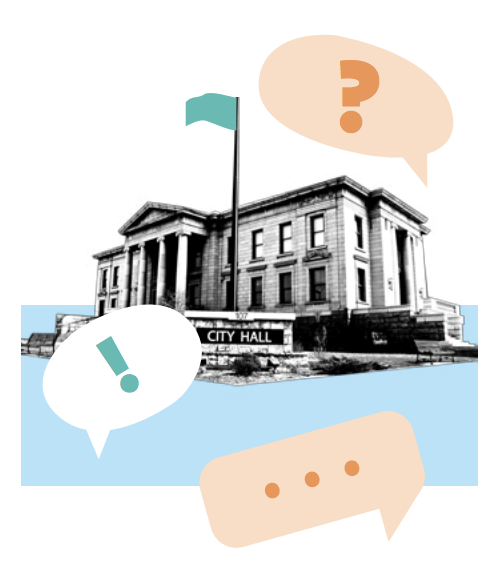
Establish ground rules for collaborating internally and with other agency partners on bus stops
Identify which municipal, transit, or private agencies in your region do (or can) contribute to bus stop objectives and understand the ways in which they do (or can) contribute to bus stops. Assess which actually help further the bus stop program. The fewer agencies involved, the easier it will be to make quick changes in line with your vision.
Convene an interagency bus stop working group that will coordinate decisions on planning or removing stops, placing amenities, and maintaining stops. This group should include staff from each organization involved in bus stop decisions, who have the authority to speak for the agency and can actively take part in mutual planning and decision-making processes.
Draft intergovernmental agreements with city agencies and contracts with other partners to delineate who is responsible for which aspects of investment and maintenance for bus stops and surroundings.
Define which agencies are willing to contribute funding to which bus stop improvements.
Hold the responsible agency accountable for the conditions of stops.
Negotiate a simple process for permitting stop amenities to decrease time and costs to implement them. Unbundle transit amenities from other street furniture in approval processes. Strive for blanket permits for types of stop amenities, so they can be approved in batches rather than individually. Limit the number of parties who must give approval for bus stop amenities to reduce the risk that an amenity will be denied.
Communicate regularly with staff in your organization and external partners about the bus stop program and changes to it that impact others’ work. Construct an email list-serve, a regular phone call check-in, or other communication tools to ensure that you keep in touch.

Expand the group responsible for bus stops and zones to focus on bus stop amenities and conditions (or develop a new group to focus on bus stops if it doesn’t already exist).
Increase the budget for bus stops
Identify funding sources that are available and appropriate to devote to your bus stop program. Look into internal budgets; collaborations with regional bodies; grants from local, state, or federal governments; or partnerships with private property owners for funds.
Increase spending on bus stops and create an annual budget item for bus stop amenities and sidewalk, crosswalk, and street improvements. This program should fund varied types of stop amenities that riders value and maintenance of bus stops.
Regularly reassess the bus stop program’s goals and funding to make sure appropriate resources are committed to improving bus stops. Define and use metrics so it is clear how the bus stop program’s outcomes help accomplish agency goals.
Piggyback on planned street construction to improve stop sites, nearby sidewalks, and crossings to reduce your own costs and speed up your timeline for improvements.
Get creative with amenity design and size in the face of space or funding constraints. Remember that riders also value benches, trash cans, lighting, detailed service information, and other improvements that are cheaper than shelters.
Ensure the maintenance budget is large enough to maintain the stops you have, and understand how a change in the number of amenities changes the cost of maintenance. Schedule maintenance as frequently as needed to ensure each stop is comfortable and clean. Maintenance schedules will vary for different stops but at least once a week is ideal.
Leverage advertising contracts
Construct a clear, comprehensive bus shelter advertising contract that invests in bus stop amenities and maintenance, and select an appropriate advertiser who agrees to these terms.
Write a contract that: Leverages your advertising market to win benefits for riders.
Communicates your agency’s vision for bus stops and enables you to prioritize shelters accordingly.
Enumerates the responsibilities the advertiser will assume, including your expectations for the number of shelters to be installed by certain deadlines and how often maintenance will be done.
Provides metrics by which to measure the performance of the advertiser.
Holds your advertiser accountable for delays or inability to meet terms (typically through financial penalties).
Includes a data sharing agreement with the advertiser.
Treat bus stop shelters and benches as a capital investment, not a revenue generator. Devote net revenue from shelter advertising to bus stop amenities, rather than using it for other expenses. Go beyond advertising revenue and invest additional agency funds in bus stop amenities.
Unbundle street furniture advertising from billboard advertising packages to ensure that shelters and benches are being built to benefit the majority of riders.
Concentrate advertising in highly-trafficked core neighborhoods, and require that advertisers fund shelters in peripheral neighborhoods with bus service but low advertisement revenue potential.
Use advertisers’ data about bus stops and shelters — including maintenance history — to help to inform improvements for riders.
